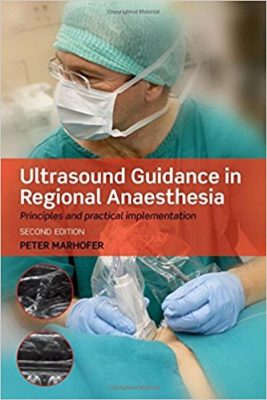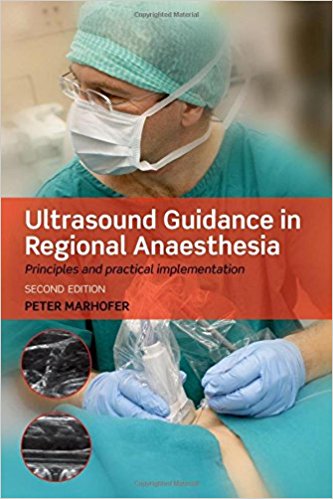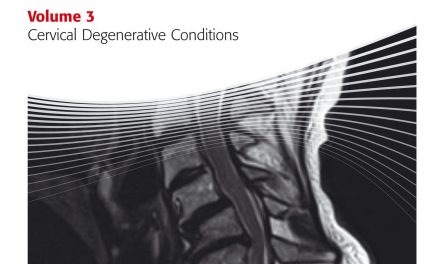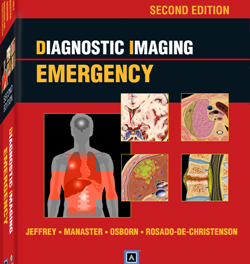 Author: Peter Marhofer, MD
Author: Peter Marhofer, MD
Publisher: Oxford University Press – 236 pages
Book Review by: Deekay Daulat
Anaesthesia (‘anesthesia’ in the United States) being a temporary induced loss of sensation or awareness during surgical or dental procedures is of two basic types: general and regional.
General anesthesia suppresses the central nervous system activity and results in unconsciousness and total lack of sensation. It may include analgesia, which is relief from or prevention of pain; paralysis which is muscle relaxation, amnesia being loss of memory, or unconsciousness. A patient is anesthetized when he or she has been given a drug called an anesthetic.
Regional and local anesthesia block transmission of nerve impulses between a particular targeted region or local part of the body and the central nervous system, causing temporary loss of sensation in that region or local area. The patient remains conscious but does not feel sensation in the targeted region because the transmission of nerve impulses has been blocked.
There are basically two kinds of regional anaesthesia; peripheral blockade and central or neuraxial blockade. What is the difference between the two?
- Peripheral blockade inhibitssensory perception in an isolated part of the body, such as numbing a tooth for dental work or administering a nerve block to inhibit sensation in an entire limb.
- Central, or neuraxial, blockade administers the anesthetic in the region of the central nervous system itself, suppressing incoming sensation from outside the area of the block. Examples includeepidural anaesthesia and spinal anaesthesia.
Major risks of anesthesia include death, heart attack and pulmonary embolism while minor ones included postoperative nausea and vomiting. The severity of risks depends on the patient’s condition and health.
This book by Dr. Peter Marhofer and four other writers focuses on the use of ultrasonographic guidance for placing pain blocks in regional areas of the body. Ultrasonography enables the anesthesiologist to clearly view nerves, nearby structures, and the needle through which the anesthetic drug flows.
Although not lengthy, having just 236 pages, this work covers a broad number of topics and subjects. We provide you an overview of its contents by listing the titles of its chapters below:
- Basic principles of ultrasonography
- The scientific background of ultrasound guidance in regional anaesthesia
- Initial considerations and potential advantages of regional anaesthsia under ultrasound guidance.
- Technique limitations and suggestions for a training concept
- Have we reached the gold standard in regional anaesthesia
- Technical and organization prerequisites for ultrasonographic-guided blocks
- Ultrasound-guided regional anaesthtic techniques in children: current developments and particular considerations
- Ultrasound appearance of nerves and other anatomical or non-anatomical structures
- Needle guidance techniques
- Pearls and pitfalls
- Nerve supply of big joints
- Neck blocks
- Upper extremity blocks
- Lower extremity blocks
- Truncal blocks
- Neuraxial block techniques
- Peripheral catheter techniques
- Future perspectives
Guidance through ultrasound provides for “precise observation “ and “exact administration of moderate volumes of local anesthetic” and for the “avoidance of complications,” the author Dr. Marhofer and four coauthors point out.
Among the key features of this book are the following:
- Strong focus on anatomical focus and subsequent practical implementations
- Neuraxial techniques added to this second edition
- Coverage of pediatric applications
- A large number of images, in black-and-white and color
- Ideal for anesthesiologists, particularly those who administer regional anesthetics
This is a highly authoritative book with excellent coverage of many topics relating to the use of ultrasonography in regional anesthesia.
Author:
Peter Marhofer, MD is a Professor of Anaesthesia and Intensive Care Medicine, and Head of Paediatric Anaesthesia in the Department of Anesthesia, General Intensive Care and Pain Therapy at the Medical University of Vienna, Austria. Professor Marhofer is a board member of the British Journal of Anaesthesia and Paediatric Anaesthesia.
He has published more than 70 scientific papers in field of regional anaesthesia and paedatric (regional) anaesthesia. Over the past 15 years he has held practical workshops in the field of ultrasound guided regional anaesthesia for participants from all over the world.
Contributors:
Mitchell S. Kaplan, PhD is principal engineer, Advanced Development at SanoSite Inc. in Bothell, Washington
Stephan Kettner, MD is Professor of Anaesthesia and Intensive Care Medicine, and Head of Paediatric Anaesthesia in the Department of Anesthesia, General Intensive Care and Pain Therapy at the Medical University of Vienna, Austria.
Lukas Kirchmair, MD is with the Department if Anaestheia and Intensive Care Medicine at the Medical University of Innsbruck in Innsbruck, Austria.
Bernhard Moriggi, MD, FIACA is Professor of Anatomy, Histology and Embryology Medicine at the Medical University of Innsbruck in Innsbruck, Austria.







